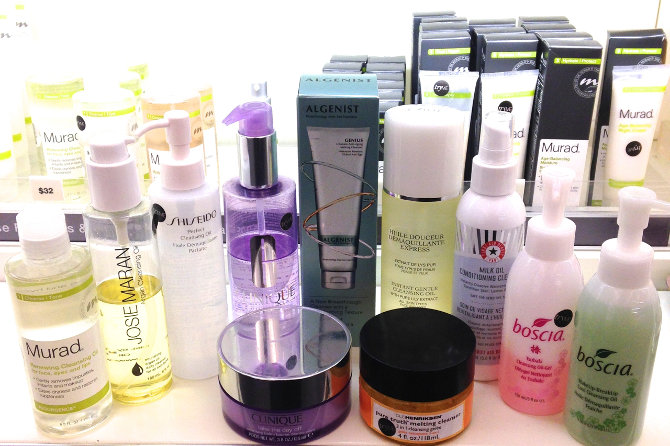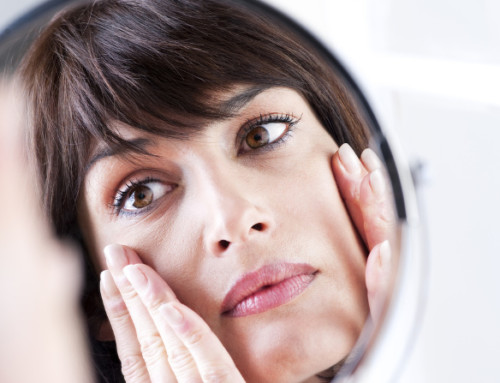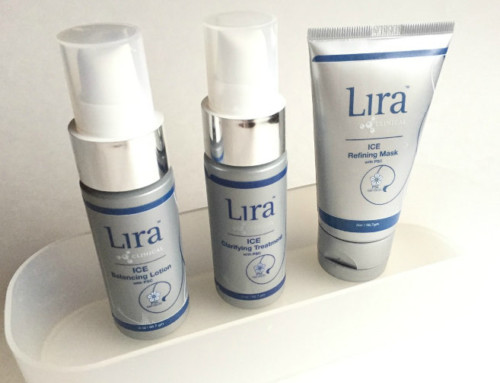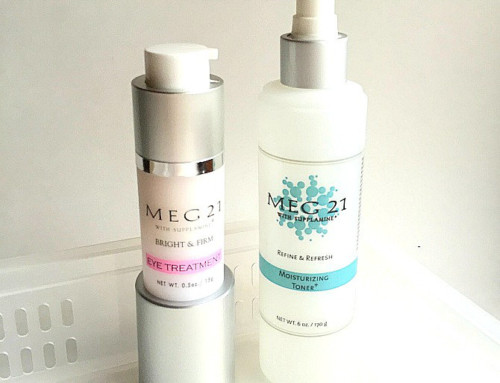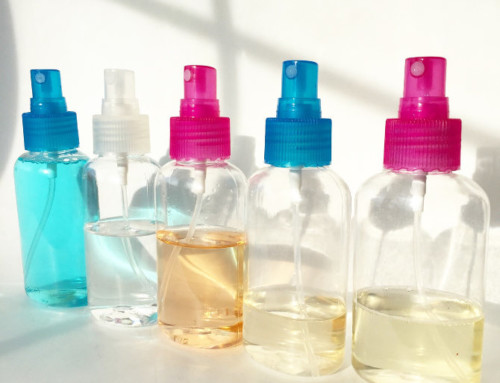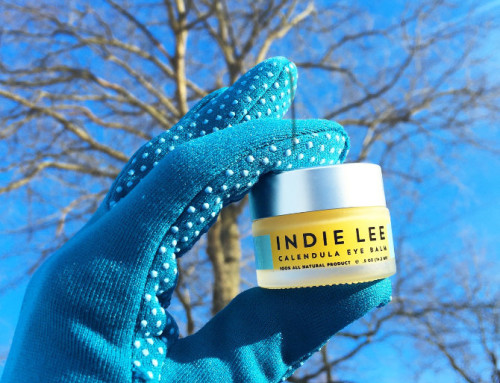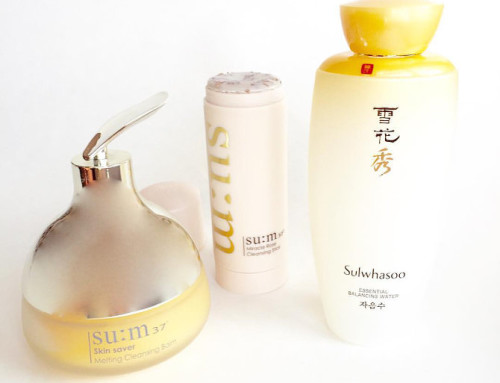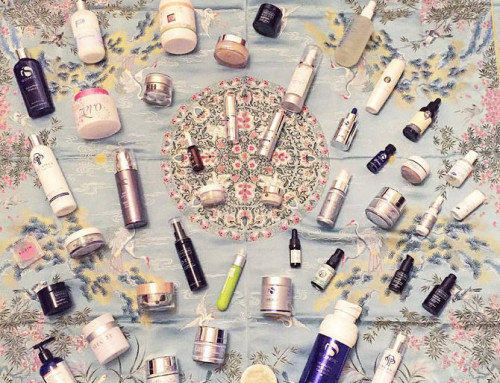The cleansing oils market is heating up. Take a look at these cleansing oils I pulled from Sephora shelves yesterday. These aren’t all the ones available either. Just the ones that were in my local store. I excluded brands that were featured in previous posts in order to show you more options.
A year ago, half of the cleansing oils & balms in Sephora weren’t even launched. I’m so glad to see that cleansing oils are hitting the mainstream here in the U.S. We’ve been behind the curve on a secret that other countries in Asia and Western Europe have known about for a while.
I received many questions about good cleansing oils after posting about the cleansing oils in my cabinet last week.
What I have discovered from talking with people about their favorites or bad experiences is that cleansing oils is a VERY personal preference. More personal than other product categories.
The texture of a cleansing oil will make or break it for you. Since a cleansing oil is so integral to your routine, it’s important you pick the right one.
You will find all sorts of recommendations from beauty bloggers and magazines (including mine). But I would encourage you to experiment for yourself. Because one person’s favorite may be a total turn-off to you.
To help you, I have compiled a list of factors to look for when you are evaluating a cleansing oil.
Finally, for those of you who are trying to be careful with your budget, I did a quick calculation on the pricing of the oils in Sephora.
The average (median) price of a cleansing oil at Sephora is $34. With a low of $22 (L’Occitane) and a high of $134 (Eve Lom). There are many good ones in the $25-30 range. So, if budget is an issue, you can get a perfectly good cleansing oil for less than $25 that will last you at least 3 months. It’s really worth the investment!
Important Factors For A Cleansing Oil
*Note: this is for oil-based cleansers, which includes liquid oils, solid balms, and gels. By a cleansing balm, I mean a solid balm that turns into an oil. And by a cleansing gel, I mean a gel that turns into an oil.
1. Slip
How well does the oil spread? Does it move easily around your face? The ideal oil/balm/gel should get moving right away.
But some oils take 5-10 seconds to get going. So then you have to rub it into skin first before it starts to slide. If you don’t use enough oil, or you have dry skin, you might find that this kind is too “drying.” I personally do not like to wait. I look for an oil that starts sliding right away.
2. Staying Power
Can you keep moving the oil around your face after a minute? Or does the oil dry up the longer you move it? The ideal oil should allow you to move it around your face for a few minutes without drying up.
In a spa facial, a cleansing oil needs to last that long for a full cleanse that includes choreographed cleansing and massage movements.
3. Emulsification
When you apply water to the oil, does it turn milky? And does it rinse away easily?
A cleansing oil should turn milky as soon as it comes into contact with water. This is called emulsification (you can learn more about it in the Double Cleanse article). It should rinse off right away, leaving skin feeling like skin, and not oily.
If the oil does not change at all, i.e. it stays an oil, then it is definitely not being emulsified. It’s not a true cleansing oil then. It’s the old-fashioned oil that requires wiping off.
This wipe-off kind of oil was designed for mature skin before cleansing oils came into vogue. You don’t find this too often anymore. They’re really not useful except for only the driest of skin. And even super dry skin benefits more from a true cleansing oil that emulsifies (you get the nourishing benefits of an oil + cleaner pores).
4. Residue
Some cleansing oils leave behind the feeling of a very slight residue. Others do not. That feeling of a slight residue is fine – it doesn’t mean the oil didn’t do a good job cleaning your skin. In fact, the residual oil is nourishing on skin.
Just to be clear on residue – by residue, I mean only the slightest hint that oil was there before. It’s not an obvious layer of oil that you can see. It won’t look shiny or feel slick to the touch. If it looks shiny or feels slick, it isn’t a true cleansing oil.
So, when evaluating residue on a cleansing oil, keep in mind:
Some cleansing oils are meant to be used as the first step of a Double Cleanse. In that case, the second water-based cleanser will remove that feeling of a residue.
- For example, Dermalogica Precleanse was designed as part of a Double Cleansing system. If used alone, it leaves the slightest feeling of a residue, but many people find this softening and nourishing.
- I happen to like using Precleanse by itself in the winter months when the air is dry and my skin needs extra nourishing.
- In the humid summer months, I add the second step of the Double Cleanse (a separate water-based cleanser).
Some cleansing oils are meant to be a one-step cleanse. These may or may not leave that residue. It just depends on the brand. You’ll have to test it for yourself.
Residue is a personal preference.
- If you have dry skin, you’ll probably like a little. If you have oily or combo skin, you’ll probably want a cleanser that is more “stripping.”
- If you value time or want a low-maintenance routine, then you might like a “one-step” cleansing oil.
- If you have oily skin, acneic skin, or a tendency for clogged pores, I recommend that you do the Double Cleanse for that extra clean.
5. Texture
This is a very personal preference.
Cleansing oils come in different viscosities – light, medium, heavy. I like medium weight oils because they feel good on my skin, and I like to have some “weight” in a oil. It makes manipulations easier.
Cleansing balms come in jars and tubes. Do you like to dip or squeeze? Do you enjoy rubbing a solid paste or cream that turns into oil?
Cleansing gels and jellies also come in jars or tubes. Some are really fluffy, others are more gelatinous. I am personally not a fan of jellies (in any kind of skincare), so this would not work for me. There’s nothing wrong with jellies, just a personal preference. I’d rather see them inside a donut, not on my skin 🙂
Some people complain about liquids being messy. Here’s a TIP – instead of pouring the oil into your palms, do this:
- Tilt your head back
- Pump or squeeze some oil from the bottle directly onto one cheek. (I’m assuming the bottle is the kind you pump or squeeze. Most cleansing oils come in this kind of bottle. If you have to pour it, disregard this tip; you’ll have to pour the oil into your hands.)
- Quickly do the same on the other cheek
- And repeat on the forehead if you need some oil there
- Put the bottle down (with your head still tilted back). Begin to move the oil around with your fingers. You can move your head back up; the oil won’t drip down by this point.
This sounds more complicated than it really is. But it isn’t hard. You’ll find that this method saves oil. When you pour oil into the palms, you inevitably use more oil. The oil ends up coating your entire hand. If you pump or squeeze only what you need onto your face, then you can just use your fingers to massage the oil in.
This method is less messy too. The oil won’t drip down your wrists or through the gaps between your fingers.
6. Oil Ingredients & Scent (they go hand-in-hand)
The oils that are in the formula make a difference if you have skin issues, such as oily skin, acneic skin, or sensitive skin. Some oils are better for those issues. I’ll talk about this in an upcoming post soon.
If you have normal skin without any major issues, then you’ll find that many oils work just fine. And the blend of oils doesn’t really matter. What matters more is whether the formula gives skin a good clean.
There is a wide range of oils used in cleansing oils. The oils will determine the scent of the product, which again is a personal preference.
Some people are very particular about scent. So it’s best to smell the oil first before you buy.
Who’s In This Photo?
The brands pictured in this photo are:
- Murad – medium weight oil with very good slip
- Josie Maran – don’t like this one (really heavy, extremely hard to spread)
- Shiseido Ibuki – lightweight oil that cleaned pretty well
- Clinique – 2 shown, 1 oil and 1 balm. The liquid one cleans fine. I’m not a fan of the feeling of the oil – it doesn’t feel like a true oil on my skin. It’s a bit slippery to the touch. I have not tried the balm.
- Algenist – new
- Dior – lightweight oil that is gentle, picks up makeup with very little effort
- First Aid Beauty – new
- Boscia – 2 shown, I love the green one (Makeup Breakup), pink one (Tsubaki) good too, but I prefer Makeup Breakup because it’s easier to spread than Tsubaki
- Ole Henricksen – have not tried this jelly
Related Reading:
Want articles delivered straight to your inbox? Sign up here.

